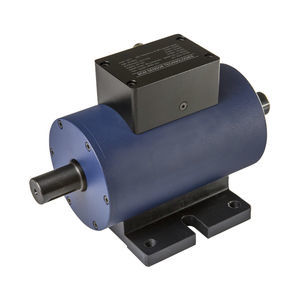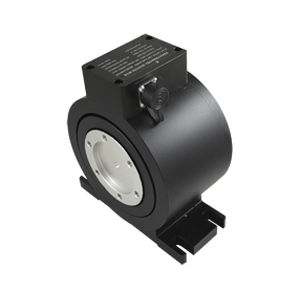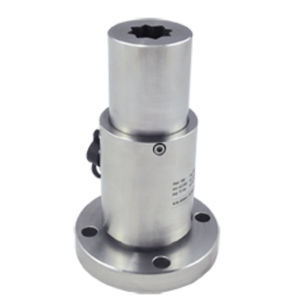
- Detection - Measurement
- Force Measurements
- Rotary torque sensor
- BCM SENSOR TECHNOLOGIES bv

- Products
- Catalogs
- News & Trends
- Exhibitions
Rotary torque sensor 1865non-contactbidirectional
Add to favorites
Compare this product
Characteristics
- Type
- rotary
- Other characteristics
- non-contact, bidirectional
- Torque
Min.: 0.01 Nm
(0.01 ft.lb)Max.: 2 Nm
(1.48 ft.lb)- Precision
0.5 %
- Rotational speed
Min.: 0 rpm
(0 rad.min-1)Max.: 5,000 rpm
(31,416 rad.min-1)
Description
Model 1865 rotating torque transducer (RTT) is developed to measure small rotary torque down to 5 milli Newton-meters (5 milli-Nm). The 1865 RTT is composed of a rotor, a stator and two mechanical bearings in between the rotor and the stator. The rotor acts as a shaft to measure torque, while the stator supplies electric power to the rotor and transmits torque signal from the rotor to a SSC (sensor signal conditioner).
Making advantages of the electromagnetic induction principle, model 1865 has no electric brush between the rotor and the stator for the power and signal transmission. Therefore, this RTT is an ideal device for applications which require long term durability and a few of maintenance of the mechanical bearings.
The measuring torque capacities of 1865 RTT can be of minimum 5 milli-Nm and of maximum 2 Nm with accuracy of 0.5%fs. Its output signal is ±6Vdc square wave frequencies, ranging from 5 kHz to 15 kHz for each of the torque capacities. Upon request, this 1865 RTT can be integrated with a speed sensor to measure rotor’s speed. The rotor speed is measured by means of a tachometric wheel of the speed sensor at a rate of 60 pulses per revolution.
This RTT is designed for bidirectional (both clockwise and counterclockwise) torque measurement. Nevertheless, it can be also used for unidirectional (either clockwise or counterclockwise) torque measurement as well.
When 1865 RTT is installed in torque measuring systems, the input end of its rotor will be connected via a coupling to the output end of a gear box of motors, while its output end will be connected through a coupling to the input end of its load.
Catalogs
No catalogs are available for this product.
See all of BCM SENSOR TECHNOLOGIES bv‘s catalogsOther BCM SENSOR TECHNOLOGIES bv products
Torque Measurement
Related Searches
- Force sensor
- Tension/compression force sensor
- Steel force transducer
- Strain gauge force transducer
- Stainless steel force sensor
- Weighing force sensor
- Beam type force transducer
- Compression force sensor
- Weighing terminal
- Digital weighing terminal
- Analog force sensor
- IP67 force transducer
- Aluminum force sensor
- Shear beam load cell
- IP65 force sensor
- IP68 resistive load cell
- OIML load cell
- Off-center load cell
- High-precision force sensor
- Compact force sensor
*Prices are pre-tax. They exclude delivery charges and customs duties and do not include additional charges for installation or activation options. Prices are indicative only and may vary by country, with changes to the cost of raw materials and exchange rates.







